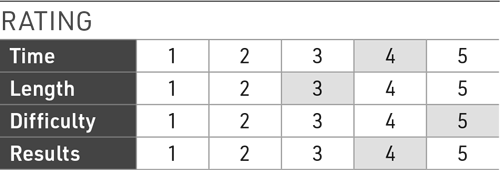What is German Volume Training (GVT)?
This is an excerpt from Jim Stoppani's Encyclopedia of Muscle & Strength-3rd Edition by Jim Stoppani.
German Volume Training (GVT) is similar to hundreds training in one major way: You do exactly 100 reps per exercise. But the key difference between the two protocols is that with GVT you use a significantly heavier weight than with hundreds training and you do exactly 10 sets of 10 reps for each exercise (which is why GVT is often referred to as 10 by 10). GVT has been used for decades by bodybuilders and other strength athletes to maximize muscle growth due to high training volume (10 sets per exercise) plus a rep count (10 per set) that’s squarely in the muscle hypertrophy window. Yet, GVT is also effective for fat loss because the high volume burns a lot of calories both during and after the workout. Like hundreds training, GVT is an advanced method that shouldn’t be used by beginners.
Ideally, you should use the same weight for all 10 sets of each exercise. I recommend choosing a weight that you can do for 12 to 15 reps, as opposed to using your 10-rep max (10RM). If you use your 10RM, there’s no way you’ll be able to hit 10 reps for all 10 sets due to muscle fatigue. As I previously mentioned, you’ll do 10 reps (no more, no less) on each set. If on the first few sets you reach rep 10 and feel like you can do more, don’t. Stop at 10. You’ll see why in those last few sets! Not all sets should be taken to failure with GVT. Rest for around two minutes between sets to ensure an adequate recovery to allow you to hit 10 reps on all sets. Again, this is a departure from hundreds training, in which the rest periods are shorter because the weight is so much lighter.
GVT can be used with any training split—upper and lower body, two day, three day, four day, or five day. However, because it’s such an intense workout, training fewer muscle groups in each workout (i.e., a four-day or five-day training split) typically works better. If using an upper- and lower-body or two-day split, stick to only one exercise per muscle group, especially if you’re training six days a week (in which each muscle group is worked three times). If using a three-day, four-day, or five-day training split, you can perform multiple exercises per muscle group since each muscle group is only worked once or twice a week. In this case, I recommend two or three exercises for larger muscle groups like quadriceps and chest, and one or two exercises for smaller muscle groups like biceps, triceps, and trapezius. Table 6.12 shows a sample GVT program using a four-day training split.


SHOP

Get the latest insights with regular newsletters, plus periodic product information and special insider offers.
JOIN NOW
Latest Posts
- Sample mental health lesson plan of a skills-based approach
- Sample assessment worksheet for the skill of accessing valid and reliable resources
- Help your students overcome what holds them back from making health-promoting choices
- Example of an off-season microcycle
- Modifying lifts
- Screening for multilevel programs in a team environment


